The date is the fruit of the date palm, a plant belonging to the large family of palm trees (Arecaceae). This fruit-bearing tree is particularly cultivated in North Africa and southern Europe.
The date is highly prized for its sweet, fleshy flesh as well as its nutritional value: rich in carbohydrates, fibre, vitamins, and trace elements, it is a source of energy for the body, especially after exercise or during a bout of fatigue.
Used in both savoury and sweet dishes, the date is well-suited to drying, allowing for longer preservation and year-round enjoyment of its benefits.
Here are 3 techniques for preserving fresh dates longer and obtaining high-quality dried dates.
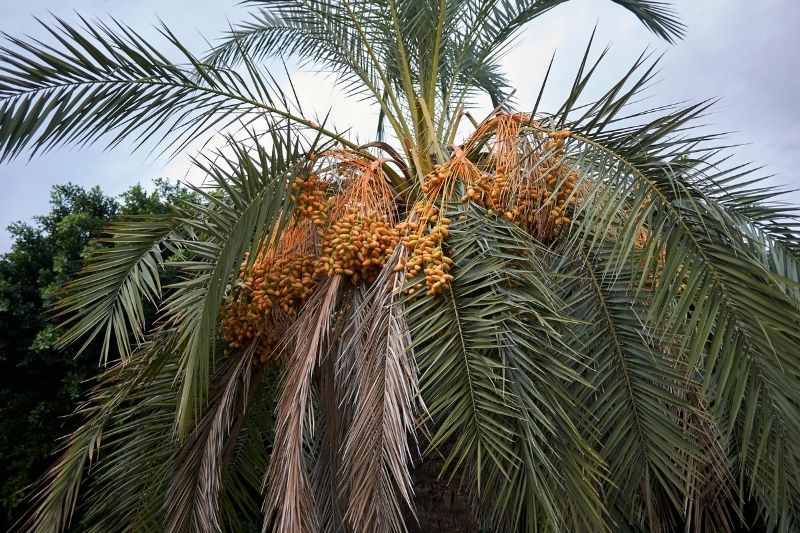
Phoenix dactylifera
The Different Varieties of Dates for Drying
There are said to be over 300 varieties of dates, producing fruits that differ in size, texture (soft or firm), and sugar content.
For drying, prioritise the most fleshy and sweet fruits, which contain less water and are easier to dry.
Opt for, for example:
- The Deglet Nour, originating from Algeria, one of the most popular with its sweet amber colour, yielding soft, smooth fruits with a honey-like taste;
- The Medjoul, with its large, fleshy, and soft fruits;
- The Khudri, mainly cultivated in Saudi Arabia, with a crispy skin and firm flesh;
- The Barhi, with its semi-dry, fibrous, and crunchy texture;
The date harvest typically takes place between October and December, but, with possible exceptions in Provence, date palms are not cultivated or harvested in France.
However, you can easily find fresh dates in bulk in oriental grocery stores, markets, organic shops, or even online. You can then dry them at home to preserve them longer and enjoy them year-round.
Drying should ideally be done shortly after picking. For optimal drying, select fruits picked as recently as possible, fully ripe, fresh, and soft to the touch.
Their appearance should be healthy, shiny, and free of a white film (sugar gradually rising to the surface of the fruit as it ages).
Choose dates of similar sizes for more uniform drying times.

Traditional harvest of fresh dates
Preparing Dates for Drying
Before drying fresh dates, ensure they are well-prepared:
- Clean the fruits with clear water and dry them with a cloth or absorbent paper;
- Pit the dates by cutting them in half lengthwise;
- Slice them into thin strips for faster drying.
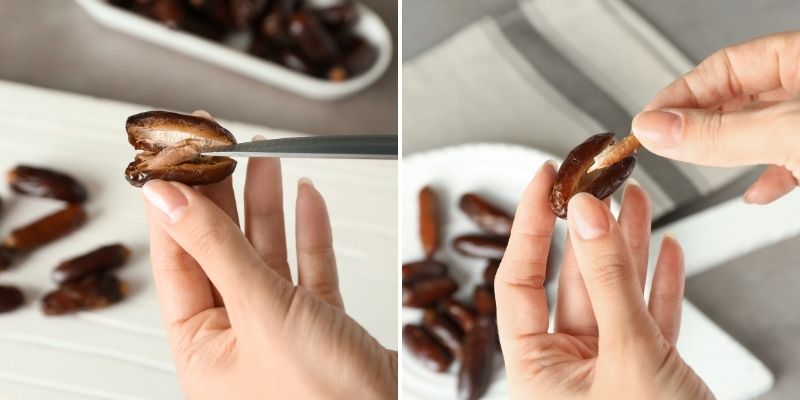
Pitting dates
Drying Dates in the Oven
Oven drying is the simplest method and proves effective for most fruits. It gently removes the water from the food without cooking it.
- Preheat your oven to a low temperature, ideally 50 to 60°C;
- Arrange the fruits on baking paper, side by side, with the cut side facing upwards, spaced apart so they don’t stick together;
- Leave to dry for 6 to 12 hours (drying time depends on the fruit variety and oven temperature);
- At the start of drying, open the oven door regularly to allow condensation to escape;
- Check the texture of the fruits regularly and turn the dates over for more even drying.
You can also start drying at the end of cooking another dish to take advantage of the oven’s residual heat.
Once dried, the dates become firm and darker. Let the fruits cool before storing them for preservation.
Drying Dates in a Dehydrator
A dehydrator is an appliance that dries food at low temperatures uniformly. More energy-efficient than an oven, it does require an additional investment.
The purchase can be worthwhile if you regularly use drying as a method of preserving fruits and vegetables.
- Simply place the date slices on the dehydrator trays, without overlapping;
- Drying time and temperature vary depending on the appliance: follow the instructions provided in the manual.
Sun-Drying Dates Naturally
In hot, sunny regions, don’t hesitate to try drying dates outdoors. This is the most natural and economical technique, as it simply uses the sun’s heat. However, it is more unpredictable and slower, depending on weather conditions.
- Place the date slices on a wooden crate or grid (the support should allow maximum air circulation) spaced apart so they don’t overlap;
- Place them in the sun in a ventilated, warm, and dry location, protected from humidity;
- Protect them from insects and dust by covering them with a mesh or muslin cloth;
- Turn the fruits regularly for even drying;
- Bring them indoors at night or during bad weather.
Another alternative: use the Espelette pepper drying technique. Pierce the fruits with a needle, string them together with food-safe twine, spacing them so air circulates well. Then, hang them covered with a fine cloth, facing south.
Under good heat and dryness conditions, drying can be complete within 10 days.
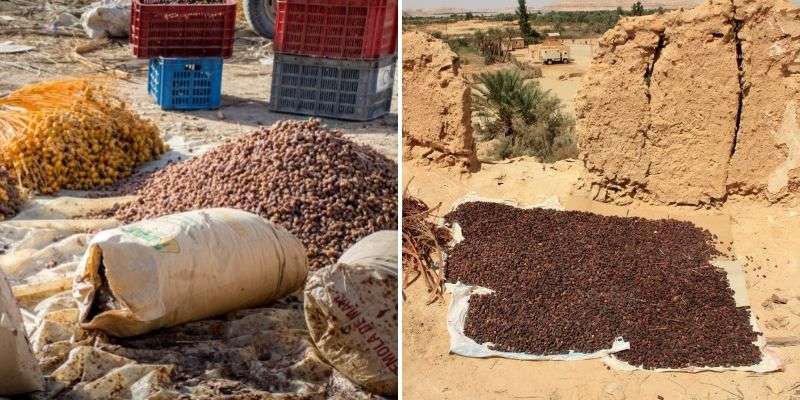
Traditional sun-drying of dates
Storing Homemade Dried Dates
Dried dates can be stored for 6 months to a year. They should be kept in airtight containers (glass, plastic, metal), in a cool, dry place, protected from moisture and light.
You can also grind the dates into powder using a mortar or blender for storage.
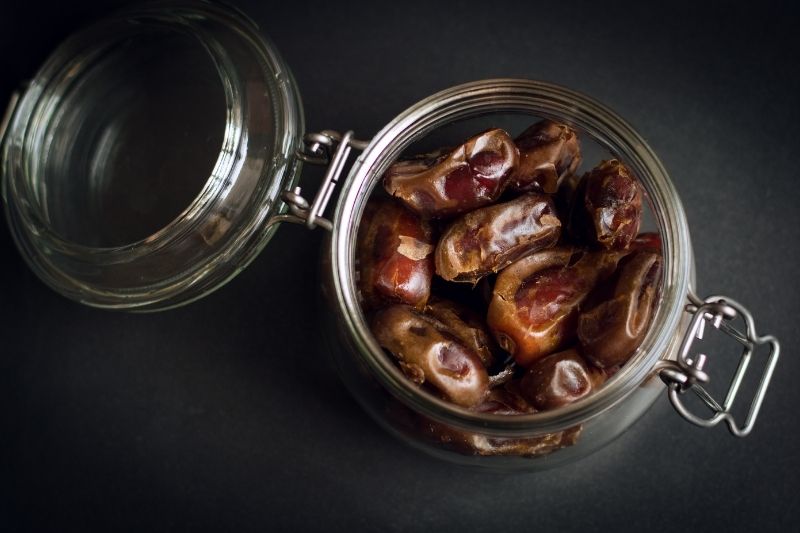
Using Dried Dates in Cooking
Enjoy the many nutritional benefits of dried dates in cooking.
Use them:
- In sweet dishes like cakes, ice creams, compotes, smoothies, granolas, and fruit salads;
- In savoury dishes like oriental meals, stuffings, sauces, or salads;
- As they are, for a healthy and energising snack;
- Rehydrated (steamed for a few minutes or soaked in warm water or fruit juice for a few hours).
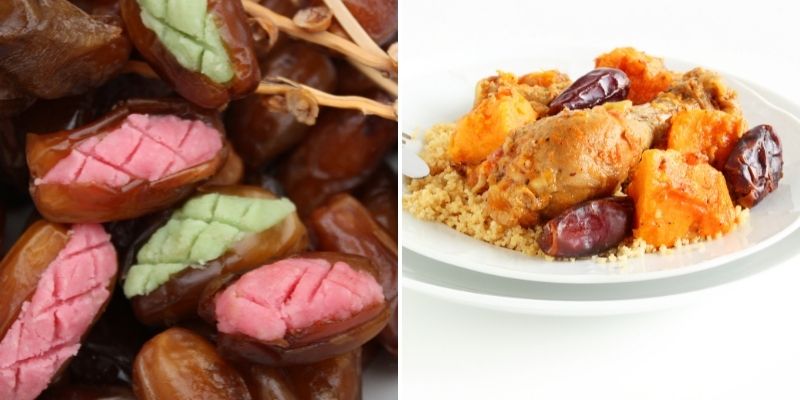
Dates with almond paste and date tajine
































Comments